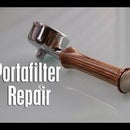Introduction: Build a Bath Bridge
A super simple stylish addition to any bathroom and a great gift.
These are the basic dimensions I start with although dimensions can be altered to suit your particular bath.
I usually allow 100mm overhang on each side of the bath but its up to you really. I also usually make the bridge 15-20mm thick, any thicker or thinner than that can can make the bridge look too spindly or too chunky.
Step 1: Milling the Timber
I only have rough sawn timber so this process is necessary for me however it is much less time consuming and easier to start from pre-dressed timber.
(Tip) It is always best to start with the timber slightly over-sized then cut it down to final dimensions.
In these photos you can see me measure, cut, thickness and sand the timber down to size. You should end up with planks 140mm wide and approx 15-20mm thick.
Step 2: Cutting to Length
Using a miter saw cut your planks to length. The two shorter end pieces are 295mm long and the longer side pieces are 850mm long.
If you look carefully at the photos you will see that I cut the two end pieces and the two side pieces together. Cutting them this way means that they end up the exact same length and gives a superior fit.
By making the two shorter end pieces 15mm longer than the width of two boards (280mm plus 15mm) creates the gap in the center of the bridge.
**Dry fit the bridge together before gluing to make sure there are no gaps in the miter joints.
Step 3: Biscuit Joint
This step is optional as I don't think the biscuits add a great deal of strength however it does making the glue up easier as it helps keep the boards aligned.
Step 4: Glue-Up
This is the trickiest part as you must work quickly as the glue can dry fast.
As seen in the photos I found the easiest and accurate way to glue-up is to apply clamping pressure both along the board and across. Doing it this way allows you adjust the tension in each clamp to make the board square and close any gaps in the joints.
**Make sure you practice without glue first**
Also its a good idea clamp the board vertically to make sure it stays flat while drying.
It can get a bit complicated with all the clamps and time constraints so might be a good idea to have a assistant for your first try.
Step 5: Sanding
Sand the entire bridge as best you can. This is the most time consuming part for me as the finish you put on later is only as good as the sanding job you have previously done.
I start at 80git, then move to 120g, 220g, 340g and finally 400g.
Step 6: Strengthening/Decorating the Bridge
This is also an optional step as it depends on the timber you are using as some timber can move quite a lot after glue-up and the joint can crack.
In these photos you can see me drill a 5/8 hole and insert a 5/8 plug in a slightly darker timber. This is for decoration only. If I wanted to add strength to this joint I would simply pre-drill and use a long screw before gluing the plug in.
Step 7: Finishing
I like to use wipe on polyurethane as its easier to apply without any runs but you can use any finish you like.
Remember to sand between coats with 400g paper for an exceptional finish. I like to apply up to four coats for best protection.
Have fun!

Participated in the
Wood Contest











